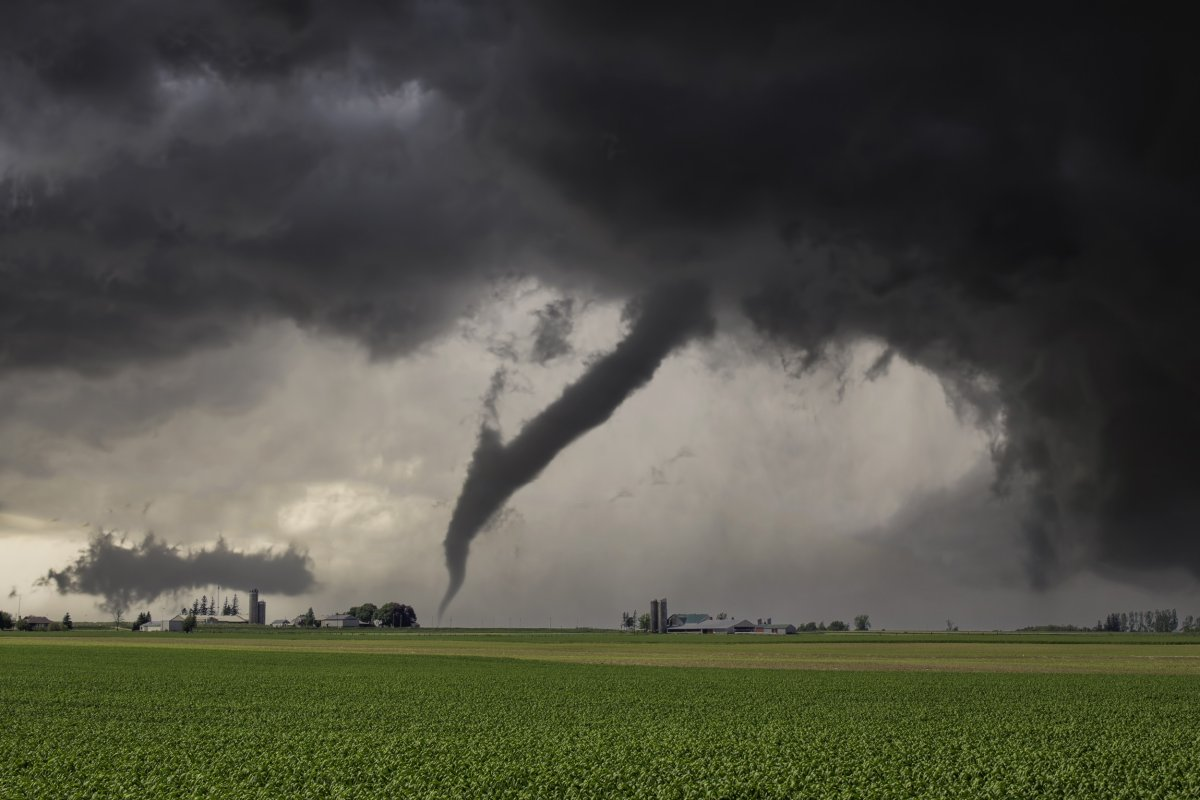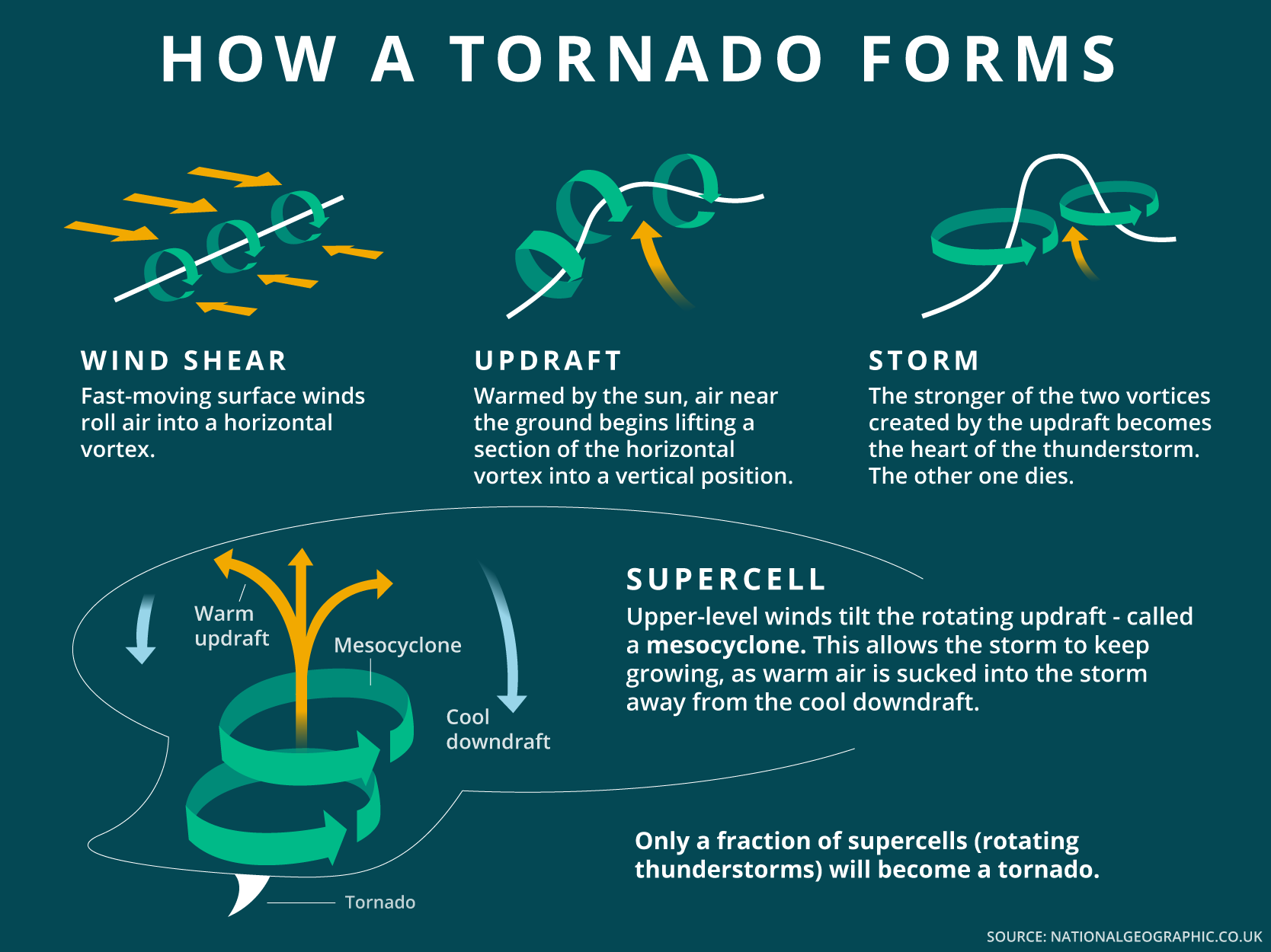





Copyright infringement not intended
Picture Courtesy: https://www.newsweek.com/tornadoes-sweeping-colorado-videos-1799613
Context: The Mainaguri area of Jalpaiguri district in West Bengal was hit by a devastating tornado on March 31, 2024. Even though they are not common in India, tornadoes have been happening more frequently recently, which has made disaster management and mitigation more difficult.
Details
Climate Change Connection
|
The warm ocean, rising land temperatures, and unusual wind patterns could be allowing conditions to become more suitable for tornadoes in India. Experts warn that this could lead to more frequent and intense tornadoes in the future. Increased tornado activity could pose a significant threat to life and property in India. It is important to improve monitoring and warning systems to prepare for this potential threat. |
About Tornado Formation

Conclusion
|
PRACTICE QUESTION Q. Consider the following statements in the context of tornadoes: 1. In India, the western states of Gujarat, Maharashtra, and Karnataka are more likely to have tornadoes. 2. India currently lacks an official monitoring system for tornadoes. 3. Warm ocean temperatures, rising land temperatures, and unstable wind patterns are possibly providing suitable circumstances for tornado formation in India. How many of the above statements are incorrect? A) Only one B) Only two C) All three D) None Answer: A Explanation: Statement 1 is incorrect: Tornadoes in India are more common in eastern states like West Bengal, Odisha, and Jharkhand. These states experience a higher frequency of tornado occurrences, especially during the pre-monsoon period. While tornadoes have been reported in other parts of India as well, such as northwest India, their occurrence is relatively less frequent compared to the eastern states. Statement 2 is correct: Unlike countries like the United States, where tornadoes are closely monitored by meteorological agencies such as the National Weather Service (NWS), India does not have an official monitoring system specifically dedicated to tornadoes. While the IMD records significant weather events, including tornadoes, there is no dedicated monitoring infrastructure or early warning system specifically tailored for tornado detection and forecasting in India. Statement 3 is correct: Warm ocean temperatures, coupled with rising land temperatures, contribute to increased humidity and instability in the atmosphere, creating favourable conditions for severe weather events, including tornadoes. Additionally, irregular wind patterns, such as cyclonic circulations and troughs, can enhance atmospheric instability and provide the necessary dynamics for tornado formation. |





© 2026 iasgyan. All right reserved